 |
The picturesque landscape of Dodong Seowon is shown July 1. (Kim Hae-yeon/The Korea Herald) |
“Seowon,” or Korean Neo-Confucian academies, were established in the mid- to late Joseon period as private institutions for the aristocratic upper class. Each seowon had a unique educational system and philosophy. Eventually the seowon established traditions that wielded much influence in the regions where they were located.
Of the 600 or so seowon that exist today, either restored or in their original state, nine were added to the UNESCO World Heritage List in July 2019. All nine were built in the 16th century and have survived in their original form.
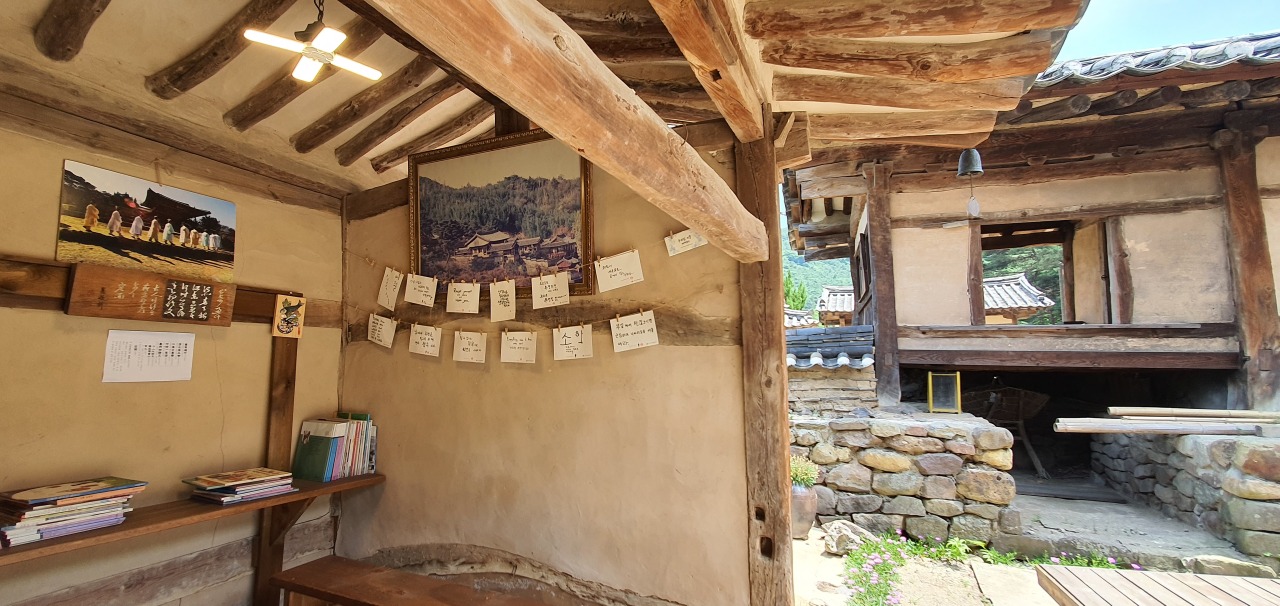 |
Educational materials are set aside for visitors in a small room at Dodong Seowon. (Kim Hae-yeon/The Korea Herald) |
From those who are curious about Joseon’s history and architecture to those hoping to learn its traditions of courtesy and respect toward family, elders and ancestors, seowon provide an opportunity to slip back in time.
On a bright summer day in July, The Korea Herald visited three seowon in the city of Daegu.
Two were holding special classes for youngsters, whose eyes were all on the instructors in hanbok. The lesson for the day was on the “seonbi,” the literati who studied and worked for the public -- separate from the government and the monarch -- and pursued a righteous path.
 |
Dodong Seowon’s main lecture hall (Kim Hae-yeon/The Korea Herald) |
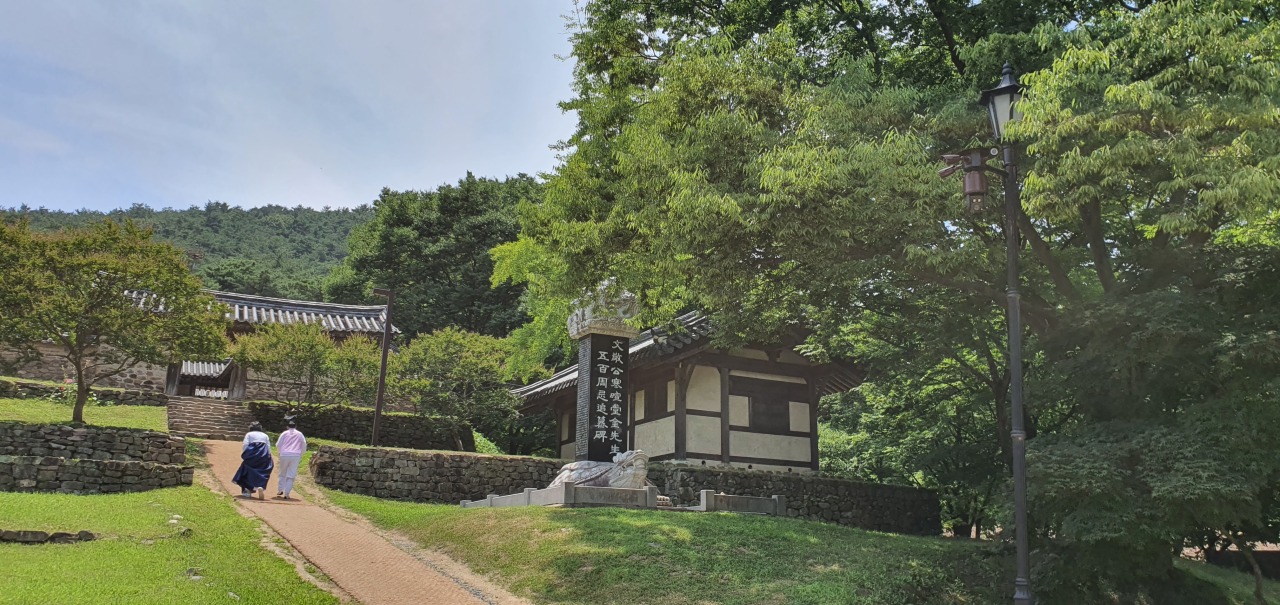 |
Instructors walk through a side gate after a class at Dodong Seowon. (Kim Hae-yeon/The Korea Herald) |
Dodong Seowon
Established in 1573, Dodong Seowon overlooks the Nakdong River. At the main building, Suwollu Pavillion, where Confucian scholars used to rest or read, a fresh breeze from Bieulsan cools visitors from behind.
Dodong Seowon was established to pay tribute to the virtues of Hanhwondang Kim Goeng-pil (1454-1504), known as one of the five sages of Joseon.
From the age of 19, Kim showed a strong belief in Seohak, an emerging philosophy linked to Western ideas. He became a student at Seonggyungwan, a royal school, in 1480, and later served as an inspector at Saheonbu, the Office of the Inspector General.
Dodong Seowon moved to its current location in 1604. The lecture hall, shrine and earthen walls were designated as national treasures in 1963. The entire Confucian academy was designated as a historic site in 2007, and it is one of the nine seowon on the UNESCO World Heritage List.
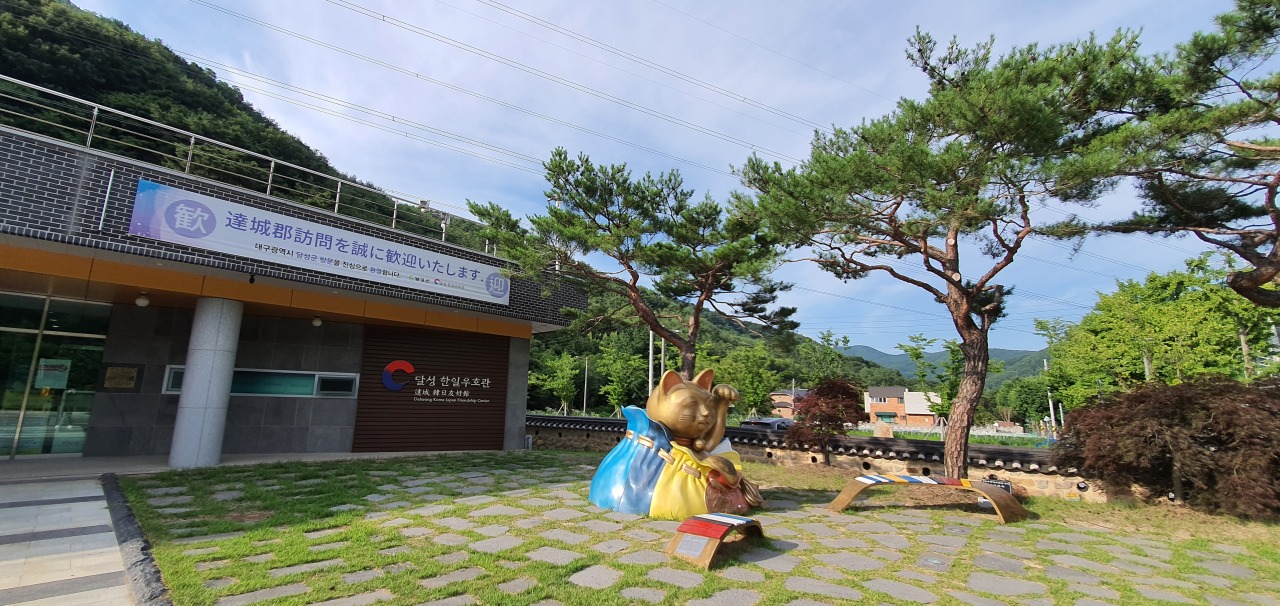 |
The Dalseong Korea-Japan Friendship Center is located at the entrance to Nokdong Seowon. (Kim Hae-yeon/The Korea Herald) |
Nokdong Seowon
Built in 1794, Nokdong Seowon in Urok-ri, Gachang-myeon, is dedicated to Gen. Kim Chung-seon (1571-1642), who fought to defend Joseon against two Japanese invasions between 1592 and 1598 and Qing China’s invasion in 1636, among others.
Gen. Kim was originally a Japanese national named Sayaka. An admirer of Korean culture and morality, he opposed the Japanese invasion of Joseon. Though he arrived in Busan as a commander during the Imjin War, leading some 3,000 Japanese troops, he soon defected and became a naturalized Korean.
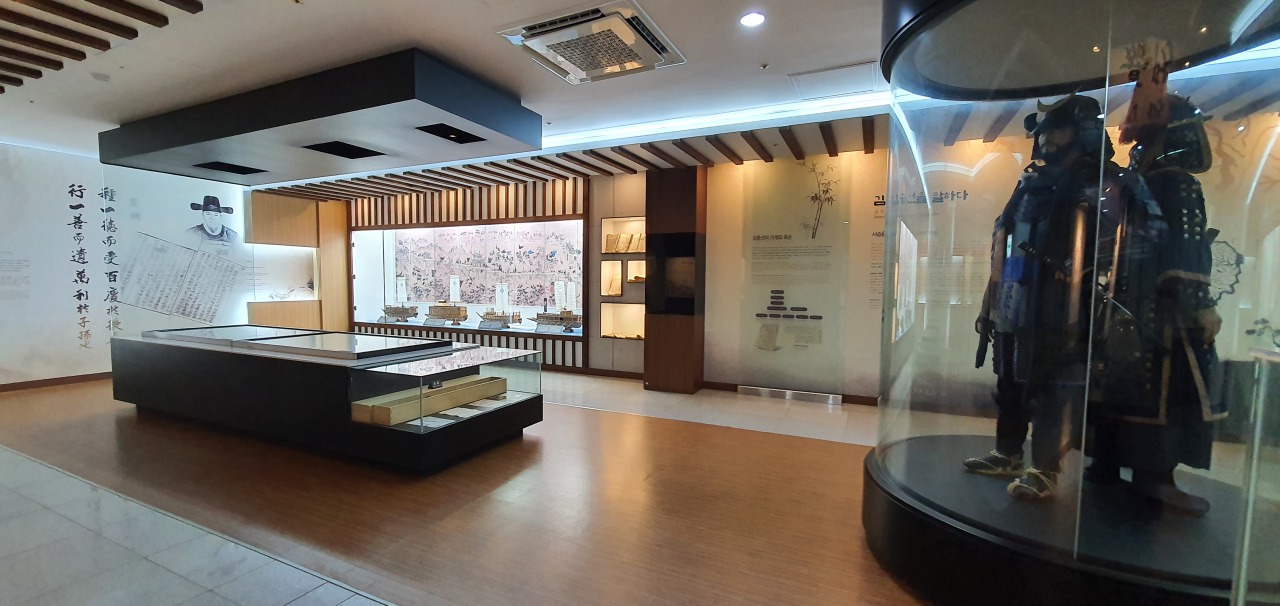 |
Information about Gen. Kim Chung-seon (1571-1642) is shown at Nokdong Seowon. (Kim Hae-yeon/ The Korea Herald) |
During King Yeongjo’s reign, Confucian scholars requested a seowon dedicated to Gen. Kim. After its opening in the 18th year of King Yeongjo, the seowon was shut down in 1869 as part of the regent’s general campaign against the seowon.
But with the support of Confucian scholars from the Yeongnam region and Gen. Kim’s descendants, it reopened in 1885 during King Gojong’s reign.
Nokdong Seowon houses Gen. Kim’s memorial tablet and holds memorial rites every spring and fall.
The site also has a virtual reality cultural experience hall and an exhibition hall with historic relics and maps. Traditional etiquette classes are held on Sundays.
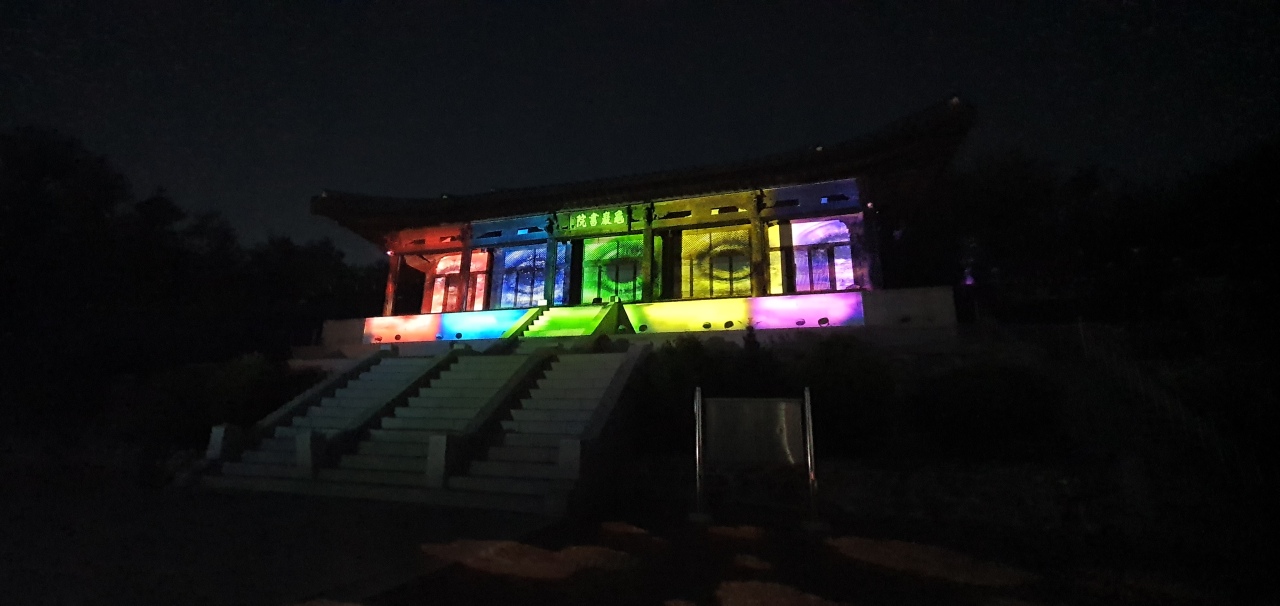 |
A media facade highlights Guam Seowon’s unique charm. (Kim Hae-yeon/The Korea Herald) |
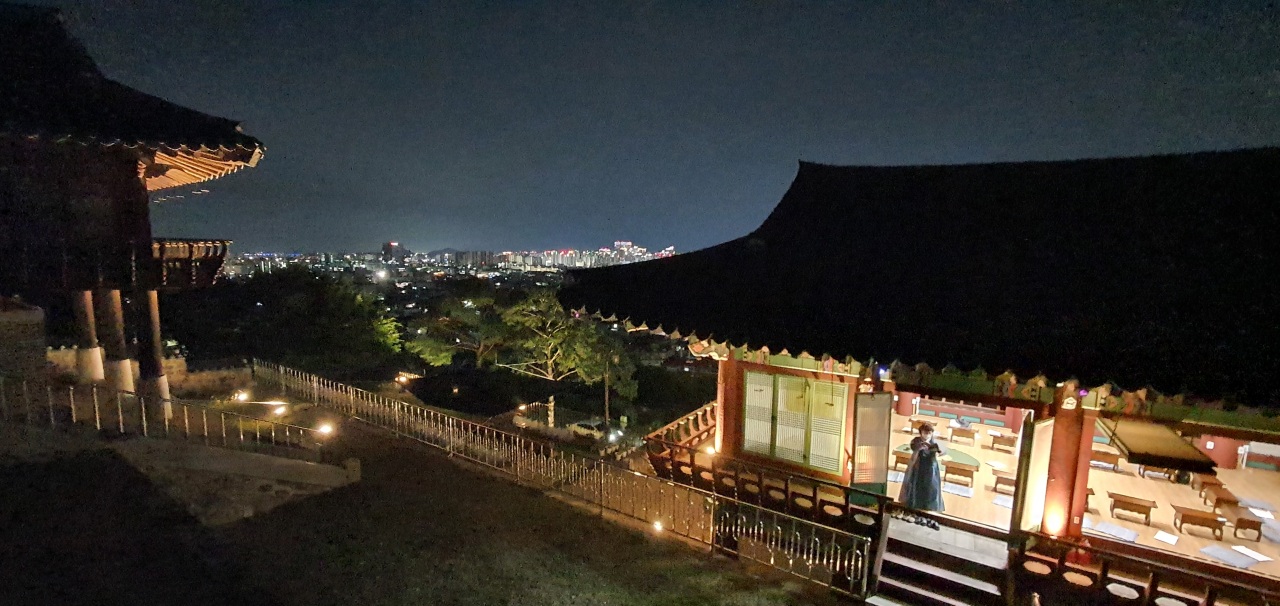 |
Guam Seowon by night (Kim Hae-yeon/The Korea Herald) |
Guam Seowon
Guam Seowon was built in 1665 to honor the great scholar Gugye Seochim of the Dalseong clan of Seo.
After the family received a royal decree in the early 14th century, it gained a powerful standing on the southern part of the peninsula. Seochim dedicated part of the family’s land to the country, since it served as a critical fortress during war. That land is now Dalseong Park in Daegu.
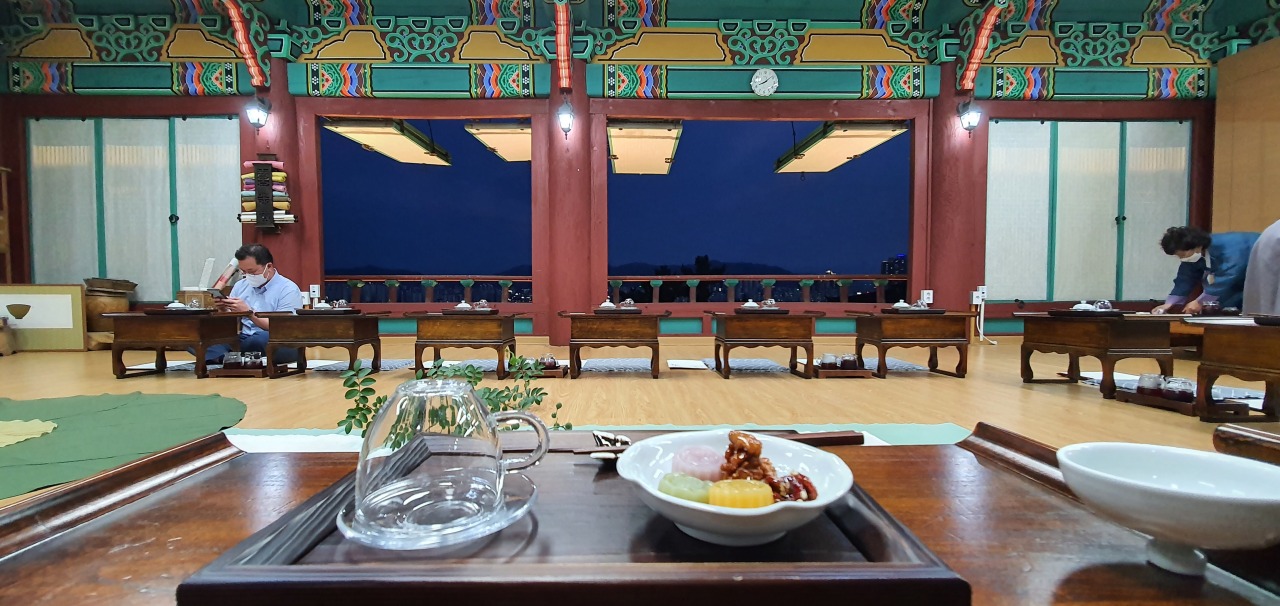 |
An evening tea session is in progress at Guam Seowon. (Kim Hae-yeon/The Korea Herald) |
Situated on some 2,300 square meters of land, Guam Seowon was an active research and teaching institution during the reign of King Hyeonjong in the 17th century.
The seowon was relocated to its current site in 1995. It now sits between Dongseong-ro and Seomun Market in downtown Daegu.
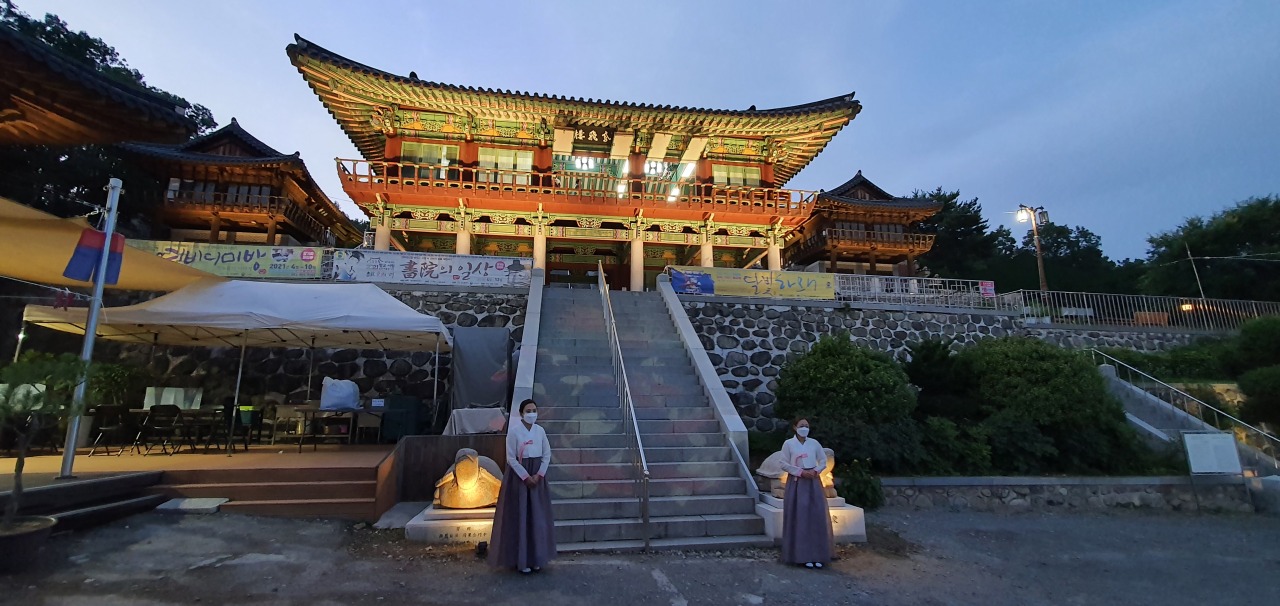 |
Guam Seowon’s main entrance (Kim Hae-yeon/The Korea Herald) |
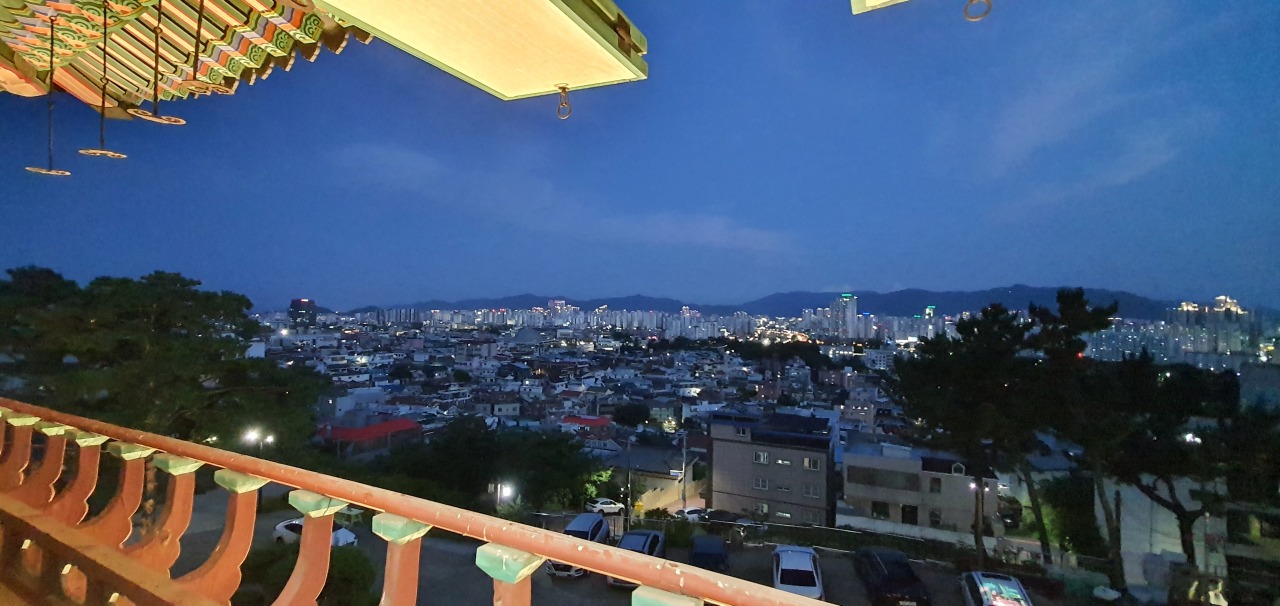 |
A view of downtown Daegu on the evening of July 1 (Kim Hae-yeon/The Korea Herald) |
Guam Seowon has five guest rooms and operates various programs throughout the year. A wide range of activities can be booked by appointment, from a traditional wedding experience to a workshop on making “hanji,” or traditional Korean paper.
At night, Guam Seowon is transformed into a digital art installation with media facades on full display at the main hall and on the stairs. There, seonbi characters and nature harmonize with the fusion gugak music that envelops the seowon.
By Kim Hae-yeon (
hykim@heraldcorp.com)

















![[Weekender] Korea's traditional sauce culture gains global recognition](http://res.heraldm.com/phpwas/restmb_idxmake.php?idx=644&simg=/content/image/2024/11/21/20241121050153_0.jpg)
